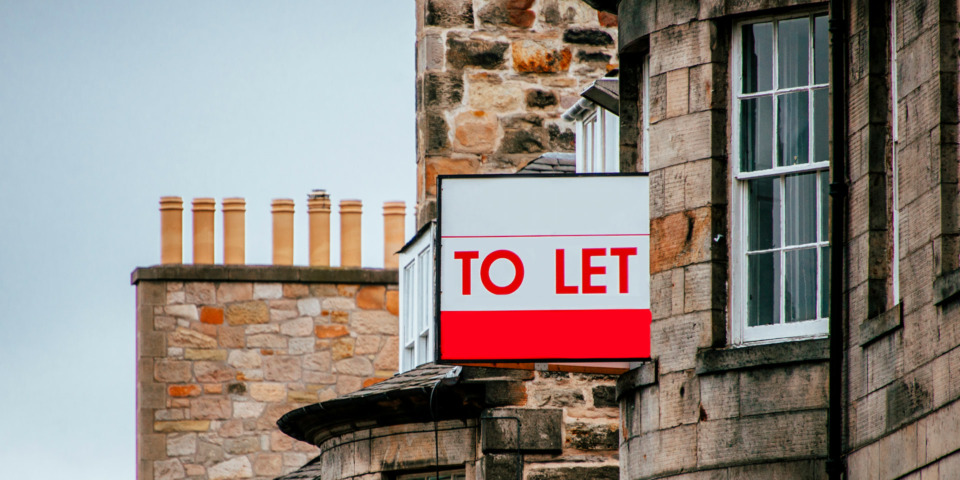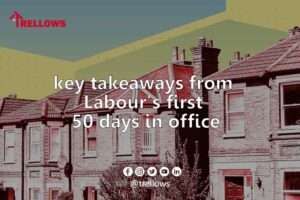- Campaigners are calling for plans to charge landlords up to £10k to be scrapped
- Plans are for all new rental homes to have an energy rating of C or above
Campaigners are urging the Government to scrap proposals to make landlords pay up to £10,000 to improve the energy efficiency of their rental homes.
The National Residential Landlords Association suggested that landlords could not reasonably be expected to pick up the tab in the way that the Government is suggesting for stringent new rules affecting buy-to-let properties.
In an official statement, NRLA said that the plans were based on the ‘misguided assumption that all landlords are property tycoons with deep pockets’.
In a consultation that closed in January, the Government proposed that from 2025 where a new tenancy agreement is signed, the property will need to have an Energy Performance Certificate rating of C or above.
From 2028, all rental properties will need to meet the new standard, even where it is not a new tenancy agreement.
The Government has suggested that, in meeting these targets, landlords should be expected to pay up to £10,000 to make the necessary improvements.
However, the NRLA said that this imposed cap fails to accept the realities of different property and rental values across the country.
It follows research from NRLA that showed private landlords making an average net income from property of less than £4,500 a year. (Scroll down for more information about how this figure was calculated.)
The National Residential Landlords Association is calling on the amount that landlords should be expected to contribute to be linked to average market rents in any given area – known as broad rental market areas – as calculated by the Valuation Office Agency.
Under the NRLA’s proposals, this would mean the amount a landlord would need to contribute would gradually taper from £5,000 to £10,000, taking into account different rental values – and by implication, property values – across the country.
VAT and council tax reductions
Alongside this, the NRLA is calling for a package of fiscal measures to support property investment.
It said these should include the development of a decarbonisation tax allowance, where VAT would no longer apply to energy efficiency and low carbon work.
And it said council tax should not be charged where energy improvements are being made to rental properties when they are empty.
Ben Beadle, of the National Residential Landlords Association, said: ‘We all want to see as many energy efficient rental properties in the sector as possible.
‘Besides being good for tenants, improvements made to rental properties ensure they become more attractive to prospective tenants when being marketed by landlords and agents.’
However, he added: ‘The Government’s proposals for the sector are not good enough.
‘They rely on a misguided assumption that landlords have unlimited sums of money and fail to accept the realities of different property and rental values across the country.
‘Ministers need a smarter approach with a proper financial package if they are to ensure their ambitious objectives are to be met.’
David Reed, of Richmond estate agents Antony Roberts, said: ‘We all want to see improvements to energy efficiency but If these proposals come to fruition, there’ll be a rush of landlords with property in vast swathes of suburbs – where older, less efficient properties make up a greater proportion of the stock – selling rather than incurring what could be considerable costs in retaining an investment in property.
‘With yields so low, returns barely meet costs as they are, especially as the latter have grown significantly in recent years either directly (Tenant Fees Act and electrical regulations) or indirectly (unable to offset mortgage interest).
‘Tenants love charming period conversion flats in good commuter territory and seldom is efficiency/an EPC rating at the forefront of the search criteria, whereas location and provision of attractive accommodation win hands down. There are simply not enough newer, in theory more efficient, properties being constructed to meet tenant demand.
‘The private rental sector vitally needs a healthy supply of good property and landlords who own one or maybe two rental properties make up a large sector of the market. Many are already disgruntled by recent changes and longer-term plans are under question. If they leave, the effect on tenants will be hard felt – a further restriction of supply giving more upward pressure on rental and lack of choice.
‘Hopefully consideration will be given to where there is no easy-fix or realistic programme of improvement to achieve grade C status or better.’
How much do landlords make?
Private landlords make an average net income from property of less than £4,500 a year, according to the The National Residential Landlords Association.
Here is how the NRLA reached that figure…
The English Private Landlord survey said that the average – median – gross rental income for a landlord before tax and other deductions is £15,000.
Average costs for landlords would be:
– Repair and replacement of furnishings – based on the previous tax exemption for 10% of annual rent (£1,500)
– Cost of a gas safety certificate (average £80 required annually – checkatrade average)
– Electrical safety check (average £265 performed every 5 years. £53 annually – checkatrade average)
– Deposit protection (£13 from TDS)
– Tenant referencing cost (for two tenants £49 NRLA tenant referencing)
– Interest-only mortgage for the average UK property (£250,000) with a 20% deposit (cheapest available £6,096 annual)
– Insurance (£531.15 for building and contents insurance from Hamilton Fraser using average floor space for PRS property https://www.statista.com/statistics/292206/average-floor-area-size-of-dwellings-in-england-by-tenure/)
– Agency fees (£1200 based on 8% agency fees)
The NRLA based its calculation on an average landlord of a house let to a couple with an interest-only mortgage, and assumed that tenants move annually.
Total gross rental income – £15,000
Repair and replacement costs – £1,500
Tenancy management costs – £726.15 (includes average cost of insurance, gas safety certificates, 1/5 of the EICR cost, deposit protection and tenant referencing)
Agency fees – £1,200
Total deductions before tax and mortgage costs – £11,573.85
Amount that can be taxed – £2,314.77 (£11,573.85 x 0.20)
Tax after mortgage interest relief accounted for – £1,095.57 (£2,314.77 – (£6,096.00 mortgage costs x 0.20)
Remaining balance after Tax – £10,478.28 (£11,573.85 – £1,095.57)
Mortgage costs – £6,096.00 (based on cheapest available 80% Loan to Value mortgage on the average property in the UK of £250,000)
Remaining balance after all average costs deducted – £4,382.28 (£10,478.28 – £6,096.00)









